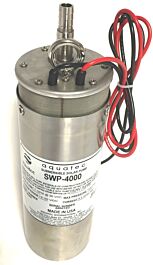fastline
Senior Member
- Location
- midwest usa
- Occupation
- Engineer
Per my other post about someone doing a tiny home, he has decided that a 24V system is probably the easiest thing to do, though I have never personally installed a 24V home system. This will be a solar system and we will be installing an outdoor charge controller so the entrance will be at 24V and there will be a battery indoors.
The two loads served is just a couple overhead lights, an exhaust fan for required air circulation in the space, and a water well pump.
I have not yet sized the pump yet but basically this is all minimal stuff. So far 100-250W but the issue is the pump is 200ft from the PV system. Though I know 24VDC motors are very tolerance of lower voltage from Vdrop, I have concerns we cannot get this bought off without some pretty serious and expensive wire!
Any thoughts or experiences with this?
The two loads served is just a couple overhead lights, an exhaust fan for required air circulation in the space, and a water well pump.
I have not yet sized the pump yet but basically this is all minimal stuff. So far 100-250W but the issue is the pump is 200ft from the PV system. Though I know 24VDC motors are very tolerance of lower voltage from Vdrop, I have concerns we cannot get this bought off without some pretty serious and expensive wire!
Any thoughts or experiences with this?



